What is a self-supporting structure?
What is a self-supporting structure?
Overview
A reciprocal frame (RF) is a self-supported three-dimensional structure made up of three or more sloping rods, which form a closed circuit, namely an RF unit. Large RF structures built as complex grillages of one or a few similar RF units have an intrinsic beauty derived from their inherent self-similar and highly symmetric patterns.
Related Article
Reciprocal Frame Structures Made Easy
This article by Peng Song, Chi-Wing Fu, Prashant Goswami, Jianmin Zheng, Niloy J. Mitra, Daniel Cohen-Or, presents a novel computational approach to aid the design of large reciprocal frame structures, or self-supporting structures.
The inner end of each rod rests on and is supported by its adjacent rod. Signified by the word “reciprocal,” which expresses mutual action or relationship, such a closed circuit is obtained as the last rod is placed over the first one in a mutually supporting manner. At the outer end, the rods are given external support by a wall, ring beams, or columns.
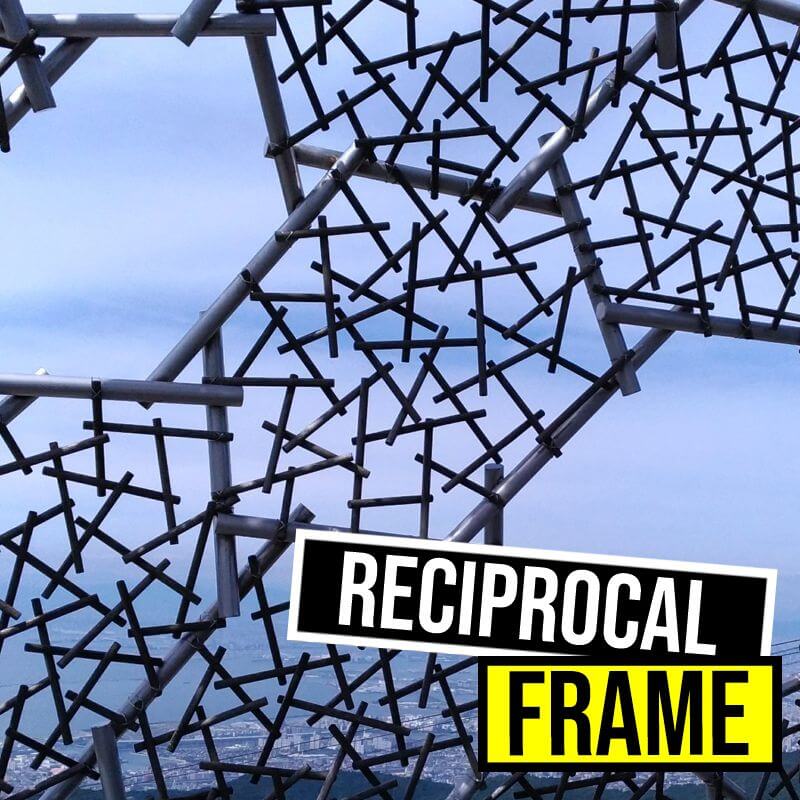
Designing Reciprocal Frame Structures with a small number
Designing structures with a small number of RF units is not an easy task, but manageable. Designing RF structures that span over large domains is an intricate and complex task. We address the problem in two steps: we first build a grillage of RF units in 2D and then lift it over a 3D guiding surface. The two steps are non-trivial.
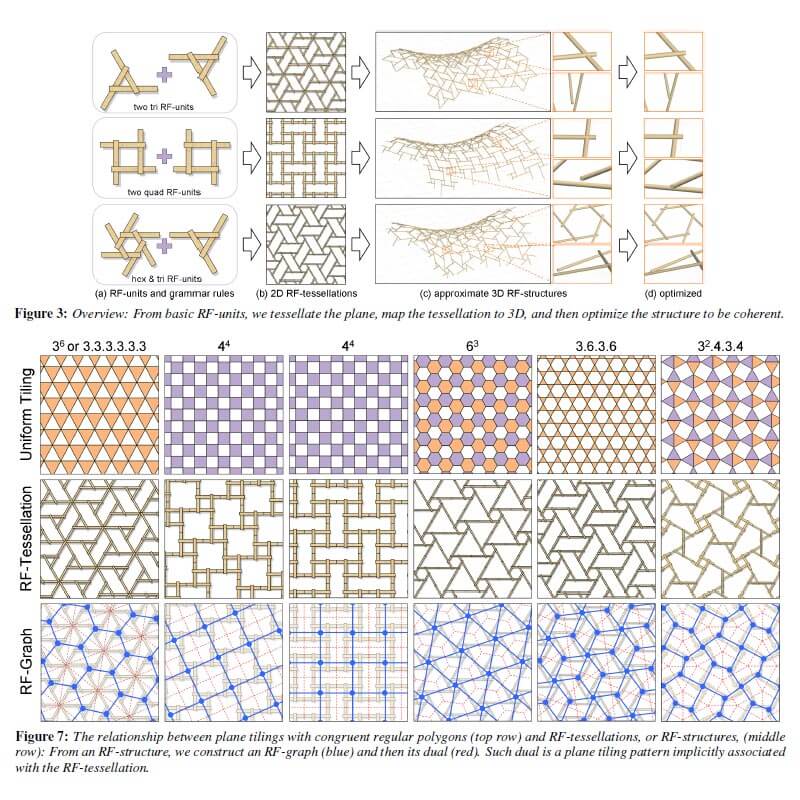 First, simply connecting RF units is unlikely to form a coherent structure as the connection between them may contradict. We draw an analogy with the problem of tiling a plane with regular polygons and develop a computational scheme to test whether a grillage of given RF units forms a valid structure. Second, lifting an RF-grillage over a given surface is necessarily carried by a non-isometric mapping, which unavoidably introduces certain distortion.
First, simply connecting RF units is unlikely to form a coherent structure as the connection between them may contradict. We draw an analogy with the problem of tiling a plane with regular polygons and develop a computational scheme to test whether a grillage of given RF units forms a valid structure. Second, lifting an RF-grillage over a given surface is necessarily carried by a non-isometric mapping, which unavoidably introduces certain distortion.
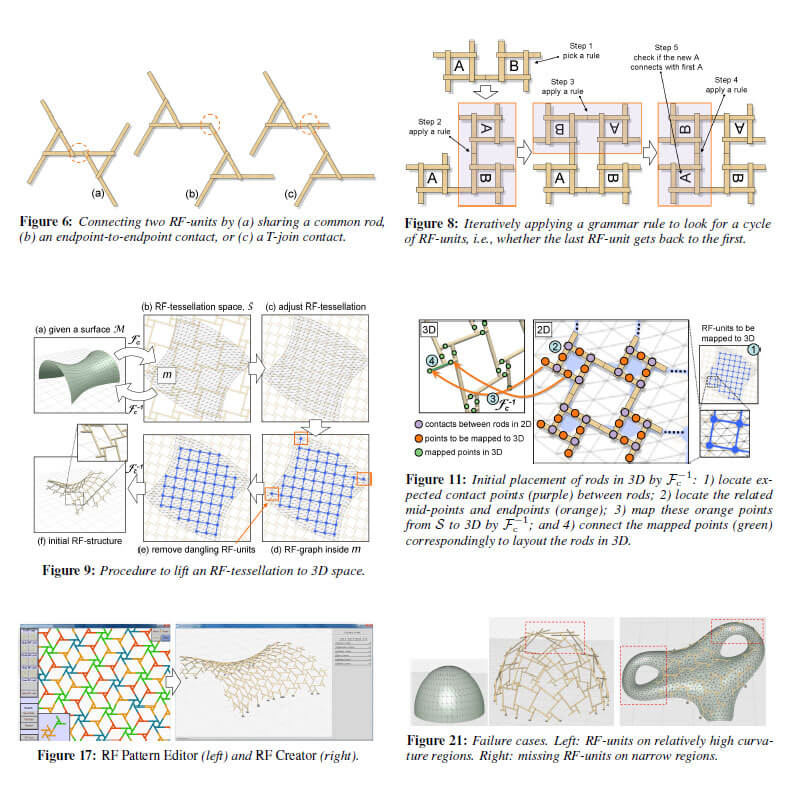 Our lifting is based on a conformal mapping followed by a relaxation process that respects both the angles among the RF patterns and the lengths of their rods. Moreover, since rods are straight in 3D and in contact with more than two others, conformal mapping can produce a good approximation of an RF structure but cannot ensure collinear contact joints along each rod. Hence, we devise further a novel optimization model to ensure collinearity of contact joints along each rod, while preserving the geometric properties of the RF structure.
Our lifting is based on a conformal mapping followed by a relaxation process that respects both the angles among the RF patterns and the lengths of their rods. Moreover, since rods are straight in 3D and in contact with more than two others, conformal mapping can produce a good approximation of an RF structure but cannot ensure collinear contact joints along each rod. Hence, we devise further a novel optimization model to ensure collinearity of contact joints along each rod, while preserving the geometric properties of the RF structure.
RF-structures in practice
RF structures are fast gaining popularity for practical eco-friendly constructions as the RF units are simple to prefabricate and reuse. However, at present, there is little support to guide users to discover the feasible arrangements of RF units. Hence, architects often manually experiment with different ways of assembling RF units by testing physical mock-ups created using rods. Although such an approach gives full control over the design, form-finding remains challenging while ensuring a valid arrangement of the RF units. As a result, even relatively simple designs can be tedious and time-consuming to the mockup.
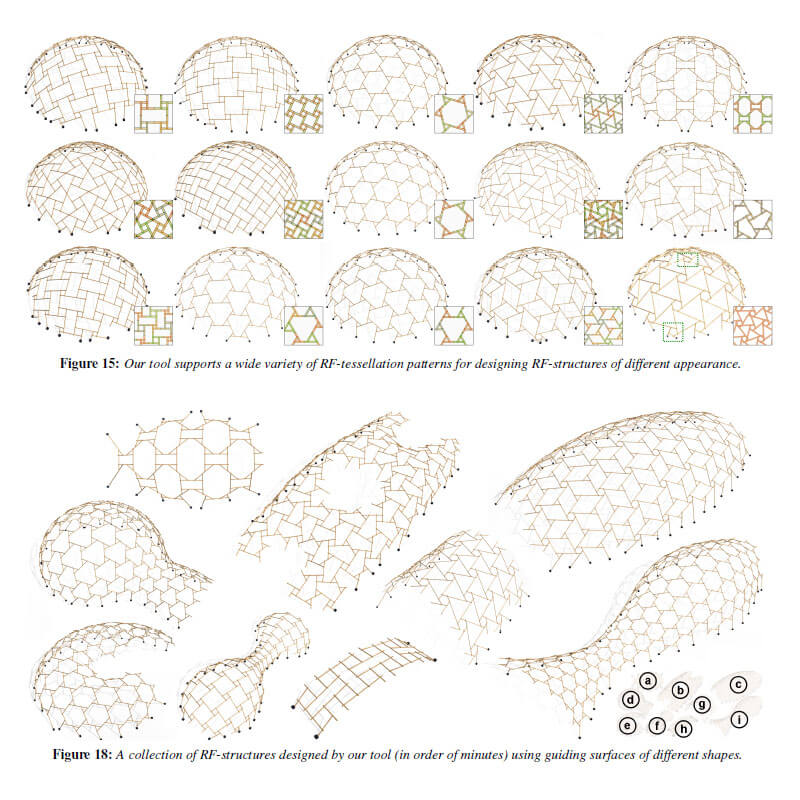
Defining and Connecting RF-Units
Large RF structures consist of a grillage of rods; however, they are designed as a two-level hierarchy. First, small RF units are defined and then aggregated into a large grid. The fundamental elements can be rods, beams, bars, or sticks. Thereafter, we will refer to them as rods. A reciprocal arrangement of at least three rods forms an RF unit, which defines the building blocks of an RF structure. There are four common approaches to physically construct an RF-unit from rods, or in general to connect two intersecting rods in an RF structure: notching, nailing, tying, and friction.
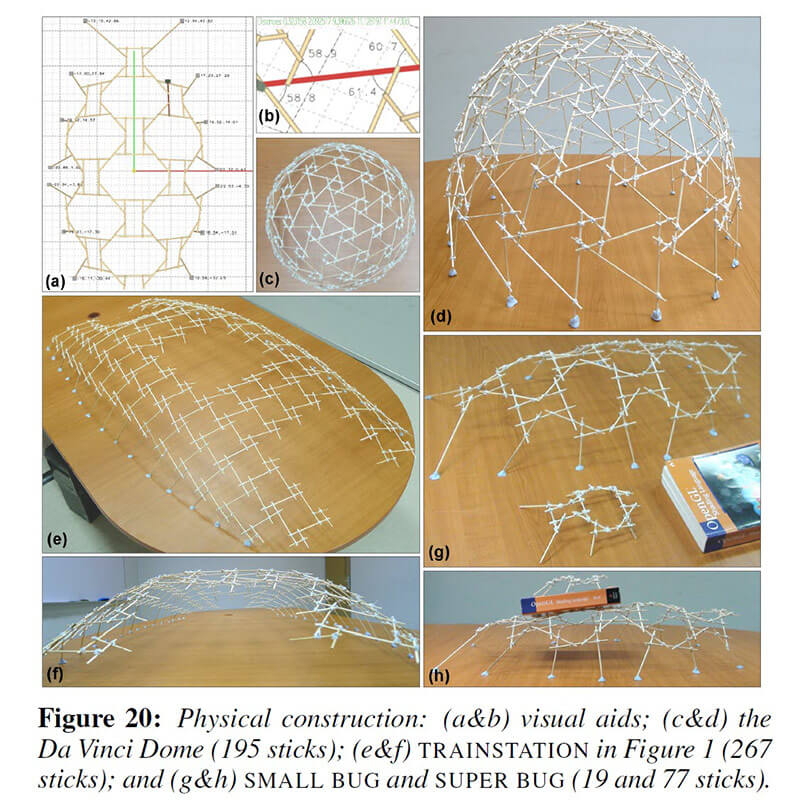
Optimizing the RF-Structure in 3D
There are two concerns to make the approximate RF structure coherent in 3D. The first is about its geometry. We need to optimize the placement of the rod to meet the collinearity requirement described earlier. There are some recent solutions to the problem, but they either work with small-scaled models with a few RF units or do not consider the tessellation symmetry.
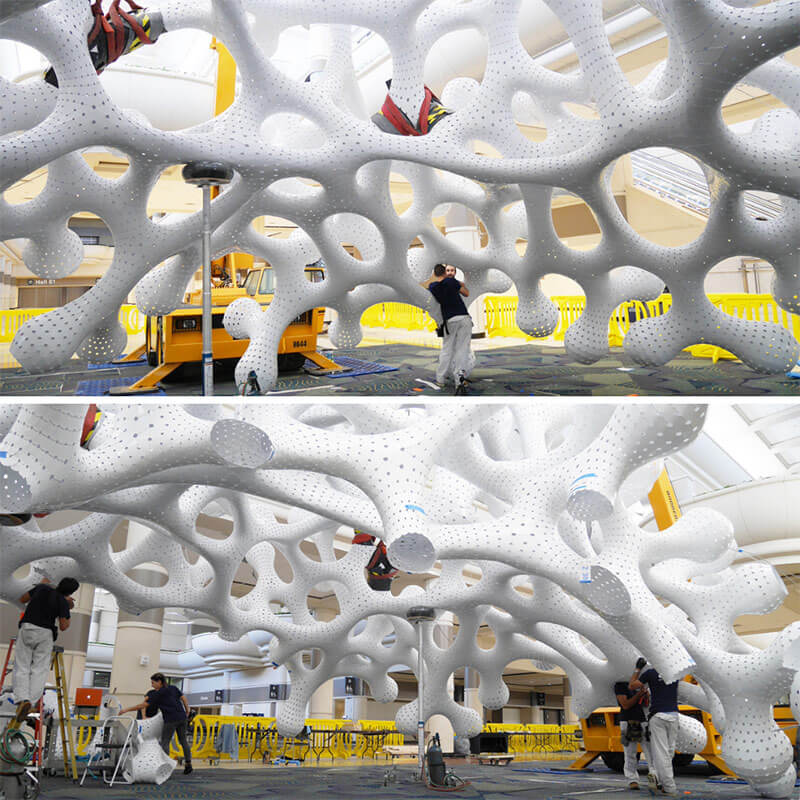 Compared to these existing solutions, our formulation for the optimization is novel; it can handle large RF structures with an extended number of RF units and considers also the structural symmetry and shape of the RF units. Moreover, it is a two-level optimization that matches the RF hierarchy: (i) relax the RF-graph in 3D, and (ii) optimize the positions of the rods. The second concern is about stability, where we use ANSYS, a professional software, to perform stress analysis on the optimized RF structure.
Compared to these existing solutions, our formulation for the optimization is novel; it can handle large RF structures with an extended number of RF units and considers also the structural symmetry and shape of the RF units. Moreover, it is a two-level optimization that matches the RF hierarchy: (i) relax the RF-graph in 3D, and (ii) optimize the positions of the rods. The second concern is about stability, where we use ANSYS, a professional software, to perform stress analysis on the optimized RF structure.
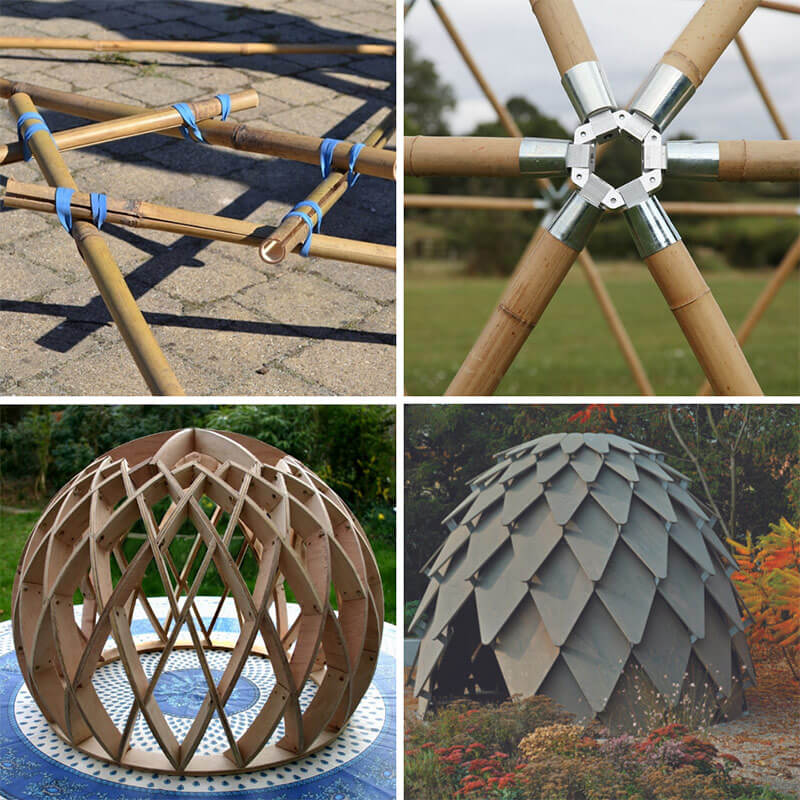
Conclusions
This paper presents a novel computational approach to aid the design of large reciprocal frame structures. We consider not only the collinear contact constraint, but also the geometric properties of the RF structure to maintain its symmetric patterns. Finally, we demonstrate the capability of our tool through a collection of RF designs: a wide variety of RF patterns and RF structures, the classical Da Vinci dome, and several physical models assembled with the aid of our tool. With this tool, we also succeed in creating some interesting new RF patterns.
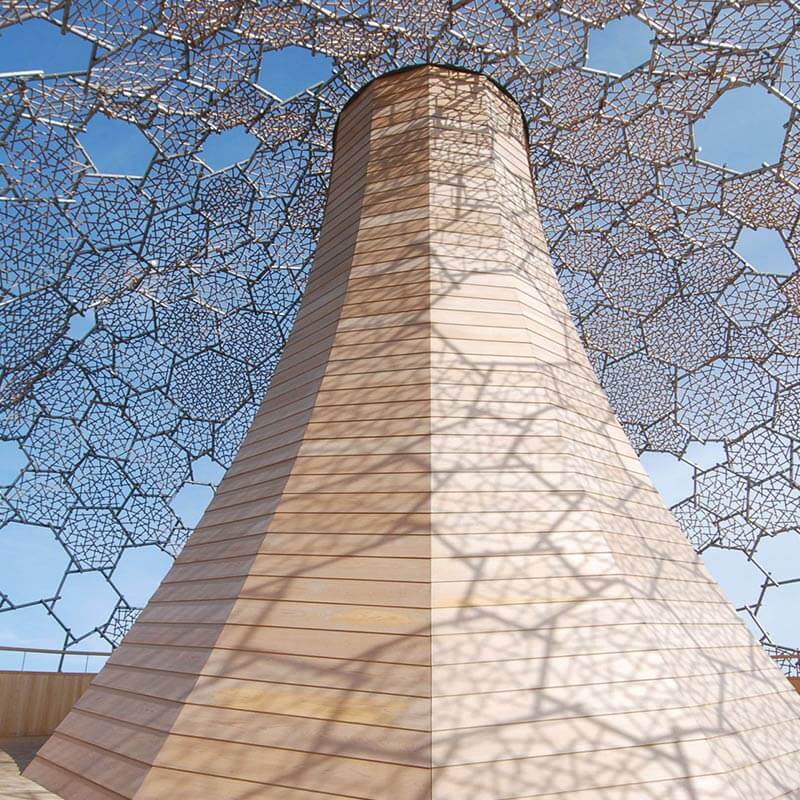
Related Project: Rokko shidare observatory
Rokko shidare observatory was Hiroshi Sambuichi art-architecture-installation-project on the summit of Rokko mountain. This observatory features a remarkable tree-like architectural design. When it is night, this observatory expressing lights the four seasons in Mt. Rokko by LED.
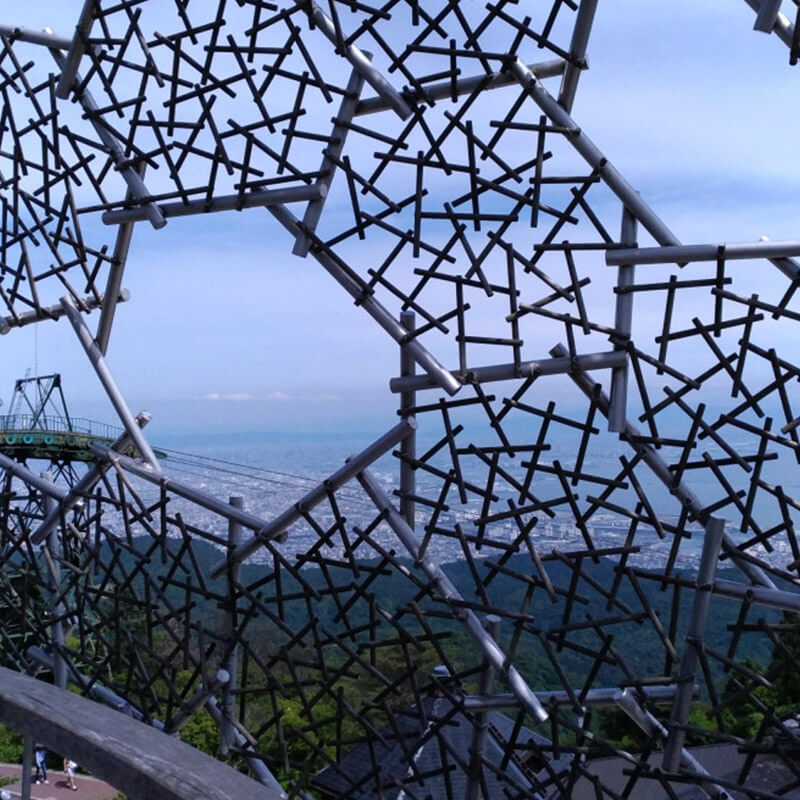
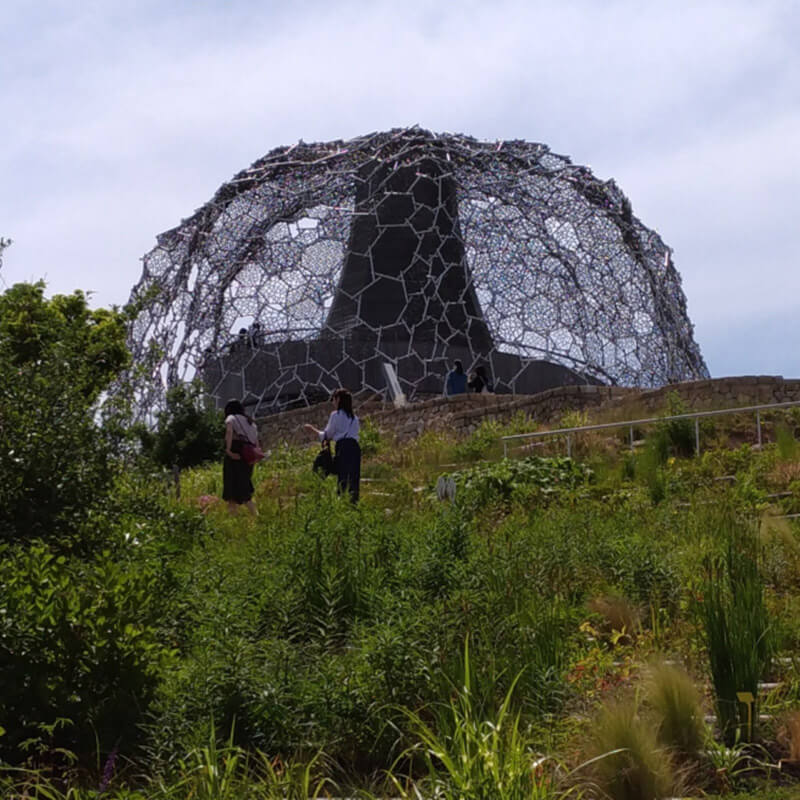




























Comments
Cfeldman
Excelente, Ojala uno pudiera encontrar un curso on line,
para desarrollar este tipo de estructuras livianas.
–Excellent, I wish one could find an online course,
to develop this type of lightweight structures.–
Thanks !!
Greetings
rezae
Hi Claudio, Yes indeed
Thank you
Felsager
This is by far one of the best websites I’ve found. I think that I invested every penny supporting the right people. This is the type of education we should get more often in our architectural schools. This is not the future, it is the present. It’s happening right now.
parametric
Thank you for your support Felsager. Glad to hear it’s useful 🙂